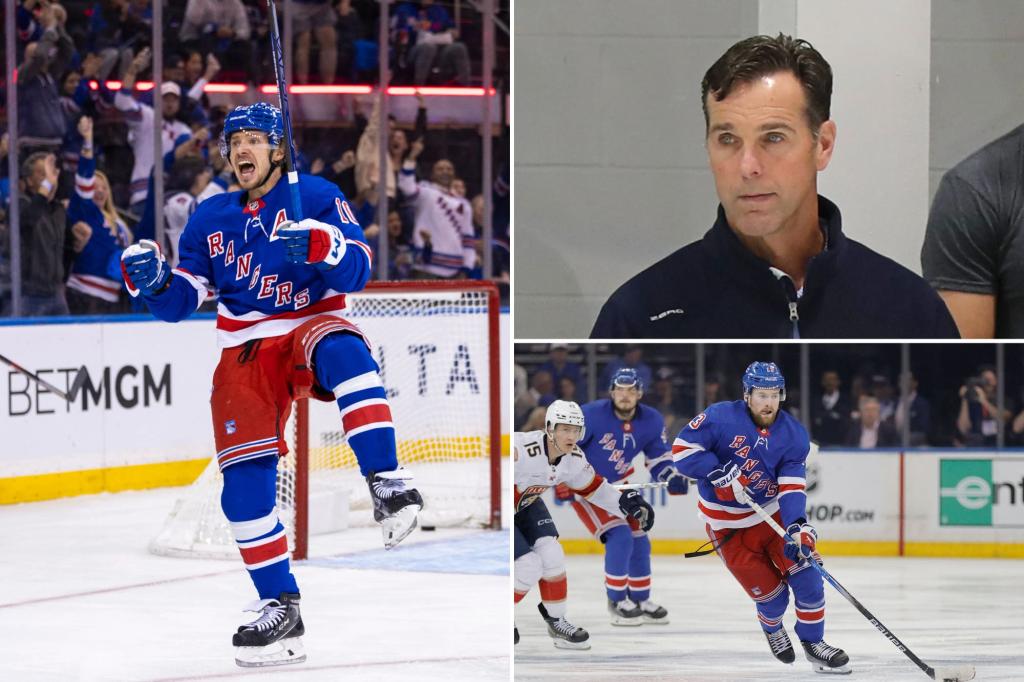The New York Rangers entered the 2024-25 season with championship aspirations, but their once-dominant power play became an unexpected Achilles’ heel. What was once considered among the NHL’s most lethal man-advantage units plummeted to become the league’s fifth-worst power play, serving as a painful microcosm of a season filled with unfulfilled expectations.
The Fall from Grace: A Statistical Nightmare
The Rangers’ power play collapse wasn’t just disappointing—it was historically bad for a franchise with such offensive talent. The unit that had been a cornerstone of their success transformed into a liability, leaving fans and analysts scratching their heads about how such a talented group could struggle so dramatically.
This dramatic decline represents more than just numbers on a scoreboard. For a team built around skilled forwards like Artemi Panarin, Chris Kreider, and Mika Zibanejad, the power play inefficiency highlighted deeper systemic issues that plagued the entire organization throughout the season.
A Glimpse of Better Days: The Zibanejad Magic
To understand the current struggles, it’s worth revisiting what Rangers power play excellence looks like. Cast your mind back to November 27, 2019—Thanksgiving Eve at Madison Square Garden. The Rangers were hosting the Carolina Hurricanes, and Mika Zibanejad was making his return after a 13-game absence due to a neck injury sustained from a Patrice Bergeron reverse hit exactly one month earlier.
The Anatomy of Power Play Perfection
That November evening showcased everything the Rangers’ power play could be when firing on all cylinders. Zibanejad’s return wasn’t just symbolic—it was transformative. The Swedish center’s vision, shooting ability, and chemistry with his linemates created the kind of electricity that Madison Square Garden faithful had been craving during his absence.
The performance that night reminded everyone why the Rangers had invested so heavily in their core group. When healthy and synchronized, this unit possessed all the elements of an elite NHL power play: a elite quarterback in Zibanejad, a net-front presence in Kreider, dynamic playmaking from Panarin, and the depth scoring that makes penalty kills nearly impossible to execute.
Diagnosing the 2024-25 Power Play Problems
The question that haunted Rangers management throughout the disappointing 2024-25 campaign was simple yet complex: How does a power play with this much talent become so ineffective?
Personnel vs. System Issues
Several factors contributed to the power play’s dramatic decline. Injuries played a significant role, disrupting the chemistry and timing that makes special teams units successful. When key players miss time, power play units lose their rhythm, and the Rangers experienced this firsthand.
Beyond injuries, there were clear systematic issues. The team’s power play entries became predictable, their puck movement stagnant, and their ability to create high-danger scoring chances diminished significantly. Opposing penalty kills began to solve the Rangers’ approach, leading to increased short-handed opportunities for opponents.
The Psychological Impact
Perhaps most damaging was the psychological toll. A struggling power play creates a snowball effect that impacts team confidence across all situations. When players expect failure on the man advantage, that negative energy permeates other aspects of their game, contributing to the broader team struggles that defined their season.
The Path Forward: Strategic Adjustments for Revival
Understanding that their power play must return to elite status for any championship hopes, the Rangers organization has begun implementing comprehensive changes designed to restore their man-advantage effectiveness.
Personnel Adjustments and Line Chemistry
The first area of focus involves optimizing personnel usage. The coaching staff is experimenting with different combinations to rediscover the chemistry that made their power play so dangerous in previous seasons. This includes rotating players through different roles and positions to find the most effective configurations.
Special attention is being paid to ensuring that Zibanejad, Panarin, and Kreider—the core of their power play success—can build and maintain chemistry throughout the season. Their interconnected play style requires consistent ice time together to reach its full potential.
Systematic Overhaul
Beyond personnel, the Rangers are implementing systematic changes to make their power play less predictable. This includes:
- Varied entry strategies to keep opposing penalty kills guessing
- Increased puck movement to create better shooting lanes
- Enhanced net-front presence to capitalize on rebounds and screens
- Better utilization of point shots to create chaos in front of opposing goalies
Learning from League Leaders
The Rangers’ coaching staff has spent considerable time studying the league’s most successful power play units to identify trends and strategies that could benefit their system. Teams like Edmonton, Boston, and Tampa Bay have maintained consistently effective power plays through different roster constructions, offering valuable lessons.
Key insights from these successful units include the importance of quick puck movement, creating multiple threats simultaneously, and maintaining unpredictability in both personnel and tactical approaches.
The Broader Impact on Team Success
The Rangers’ power play revival isn’t just about improving one aspect of their game—it’s about restoring a fundamental component of their identity. A functioning power play provides momentum shifts, confidence boosts, and the ability to capitalize on opponent mistakes that are crucial for playoff success.
Historical analysis shows that teams with elite power plays have significantly better chances of deep playoff runs. For the Rangers to achieve their championship aspirations, returning to power play excellence isn’t optional—it’s essential.
Key Takeaways
- The Rangers’ power play collapsed to fifth-worst in the NHL during 2024-25, representing broader team struggles
- Historical success, exemplified by performances like Zibanejad’s 2019 return, shows the unit’s potential when healthy and synchronized
- Multiple factors contributed to the decline, including injuries, predictable systems, and psychological impacts
- Revival efforts focus on both personnel optimization and systematic overhauls to restore effectiveness
- Power play success is crucial for the Rangers’ championship aspirations, making this revival effort a top organizational priority
- Learning from league-leading power plays provides valuable insights for implementing successful strategies
This article is based on reporting from the original source

Born and raised amidst the hustle and bustle of the Big Apple, I’ve witnessed the city’s many exciting phases. When I’m not exploring the city or penning down my thoughts, you can find me sipping on a cup of coffee at my favorite local café, playing chess or planning my next trip. For the last twelve years, I’ve been living in South Williamsburg with my partner Berenike.

